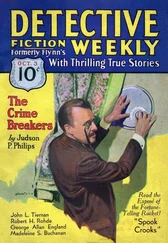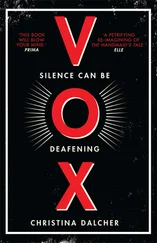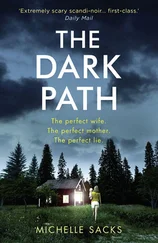And finally, but certainly not last, there is the quality of her writing, particularly her descriptive powers. Sometimes it is a single word which reveals her mastery. Singing in the Shrouds begins with a description of the London docks, and the tall cranes are described as “pontifical,” an arresting and vivid image. H. R F. Keating, who includes A Surfeit of Lampreys in his collection of the hundred best crime novels ever written, instances one sentence from that novel, which describes the heroine, Roberta, arriving from New Zealand by boat in London. She looks out at the other ships at anchor in the early morning light, and, Ngaio Marsh writes, “Stewards, pallid in their undervests, leant out of portholes to stare.” The picture is arresting, original and certainly described from personal experience. But for me, perhaps not surprisingly, it is the New Zealand novels which include some of her best descriptive writing: her native country seen through an artist’s eyes and described with a writer’s voice.
Reading the best of Ngaio Marsh, I feel that there was always a dichotomy between her talent and the genre she chose. So why did she pursue it with such regularity, producing thirty-two novels in forty-eight years? They were quickly written, principally to supply a regular and sufficient income for her to live and dress well, and to enable her to continue her main interest, which was the promotion of the theatre, particularly Shakespeare’s plays, in her native New Zealand. Marsh was a deeply reserved, indeed in some respects a private person, and she may well have felt that to extend the scope of her talent would be to betray aspects of her personality which she profoundly wished to remain secret. There was, too, the complication that she lived a double life. New Zealand was her birthplace and she wrote about it with affection, but her heart was in England and some of her happiest memories were when she took the long journey from the South Island to London. Her response to New Zealand was always ambivalent. She disliked and criticised the New Zealand accent, was uncertain in her literary portrayal of the Maoris, found her chief and most lasting friendship among a family of English aristocrats and retained a romantic view of the perfect English gentleman, a species to which, of course, her detective Roderick Alleyn belonged.
When Dorothy L. Sayers finished with Lord Peter and transferred her creative enthusiasm to her theological plays, she could comfort herself that she had done well with her aristocratic sleuth, and in Gaudy Night had used the detective story to say something about the almost sacramental importance of work and the problems for women of reconciling the claims of heart and mind which, she wrote, had been important to her all her life. Margery Allingham widened the scope of her talent so that the later novels are markedly superior to those written earlier in both characterisation and plot, while Agatha Christie knew precisely what she could do best and did it with remarkable consistency and regularity throughout a long writing life. It seems to me that only Ngaio Marsh-popular as she was and indeed remains-could have left a more impressive legacy as a novelist.
All four women had their secrets. Dorothy L. Sayers concealed the birth of her illegitimate son from her parents and close friends until her death. Her parents never knew they had a grandson. Agatha Christie never explained or spoke about her mysterious disappearance in 1926, which became a national scandal; Margery Allingham suffered much ill-health and personal anguish at the end of her life. Both Christie and Marsh falsified their ages, Marsh by actually altering her birth certificate. The secrets of their characters’ lives were finally explained by the brilliance of Hercule Poirot, Albert Campion, Lord Peter or Roderick Alleyn, but their own secrets remained inviolate until after their deaths, when all secrets, however carefully guarded or pitiable, fall prey to the insistent curiosity of the living.
Christie, Allingham and Marsh successfully continued writing detective stories well after the Second World War. Christie’s last detective story, Postern of Fate , was published in 1973, Allingham’s Cargo of Eagles in 1966 and Marsh’s Light Thickens in 1982. Dorothy L. Sayers’s last full-length detective story, Busman’s Honeymoon , was first published in 1937 and reissued by Gollancz in 1972. But by the time it first appeared, Sayers was already losing interest in her aristocratic detective and turning her attention to her theological plays, and finally to her half-completed translation of Dante’s Divine Comedy , which was to be her creative passion for the rest of her life. But no novelist can distance herself from the social and political changes of contemporary life, and those detective writers who lasted into the new age, symbolised by that mushroom cloud over Hiroshima, necessarily had to adapt their fictional worlds to less comfortable times. Agatha Christie did so with some success, but even so, when a character in her books refers to returning from the war, or his experience during the war, I have to look back to the date of publication to know whether he is referring to the Great War of 1914-18 or the 1939-45 conflict.
In the Agatha Christie novels the changes in contemporary life are mostly shown by the inconveniences suffered by the characters in ob taining servants, good service from tradesmen or maintaining their houses. Superintendent Spence, the retired policeman in Hallowe’en Party , published in 1969, deplores the way that girls are no longer looked after by their aunts and older sisters and that “more girls nowadays marry wrong ’uns than they ever used to in my time.” Mrs. Drake complains that “mothers and families generally” were not looking after their children properly any more. There are complaints that too many people who ought to be under mental restraint are allowed to wander round freely at risk to the public and that those who went to church only got the modern version of the Bible, which had no literary merit whatsoever. Altogether things are not as they were in St. Mary Mead. Poirot, however, is little changed, although in Hallowe’en Party he admits to dyeing his hair. Strangely, however, he now speaks like an Englishman but still, to Mrs. Oliver’s dismay, insists on wearing patent leather shoes in the country. The limp which affected him when we first encountered him has long since disappeared.
While Roderick Alleyn shows no sign of development for either good or ill, Allingham’s Albert Campion becomes more serious and Lord Peter Wimsey is elevated into a wish-fulfilment hero, the kind of man his creator would obviously have liked to marry: the scholar manqué of Gaudy Night , standing with the Warden of All Souls outside St. Mary’s Church having listened to the University sermon. But the great international changes of the immediate post-war years largely passed these writers by in their fiction, though not in their lives, as no doubt was artistically understandable. In the words of Jane Austen in Mansfield Park :
Let other pens dwell on guilt and misery. I quit such odious subjects as soon as I can, impatient to restore every body, not greatly in fault themselves, to tolerable comfort, and to have done with all the rest.
Miss Marple would have approved.
6. Telling the Story: Setting, Viewpoint, People
“It is my belief, Watson, founded upon my experience, that the lowest and vilest alleys of London do not present a more dreadful record of sin than does the smiling and beautiful countryside.”
Arthur Conan Doyle, “The Adventure of the Copper Beeches”
READING ANY work of fiction is a symbiotic act. We the readers contribute our imagination to that of the writer, willingly entering his world, participating in the lives of its people and forming from the author’s words and images our own mental picture of people and places. The setting in any novel is therefore an important element of the whole book. Place, after all, is where the characters play out their tragicomedies, and it is only if the action is firmly rooted in a physical reality that we can enter fully into their world. This is not to suggest that setting is more important than characterisation, narrative and structure; all four must be held in creative tension and the whole story written in compelling language if the book is to survive beyond its first month of publication. Many readers if questioned would opt for characterisation as the vital element in fiction, and, indeed, if the characters fail to convince, the novel is no more than a lifeless unsatisfying narrative. But the setting is where these people live, move and have their being, and we need to breathe their air, see with their eyes, walk the paths they tread and inhabit the rooms the writer has furnished for them. So important is this identification that many novels are named for the place on which the action is centred; obvious examples are Wuthering Heights, Mansfield Park, Howards End and Middlemarch , where the setting exerts a unifying and dominant influence on both the characters and the plot. I aimed to make this true of the River Thames in my novel Original Sin , where the river links both the more dramatic events of the story and the mood of the people who live or work near it. To one it is a source of continual fascination and pleasure, her riverside flat a symbol of ambition achieved, while to another the dark ever-flowing stream is a terrifying reminder of loneliness and death.
Читать дальше












